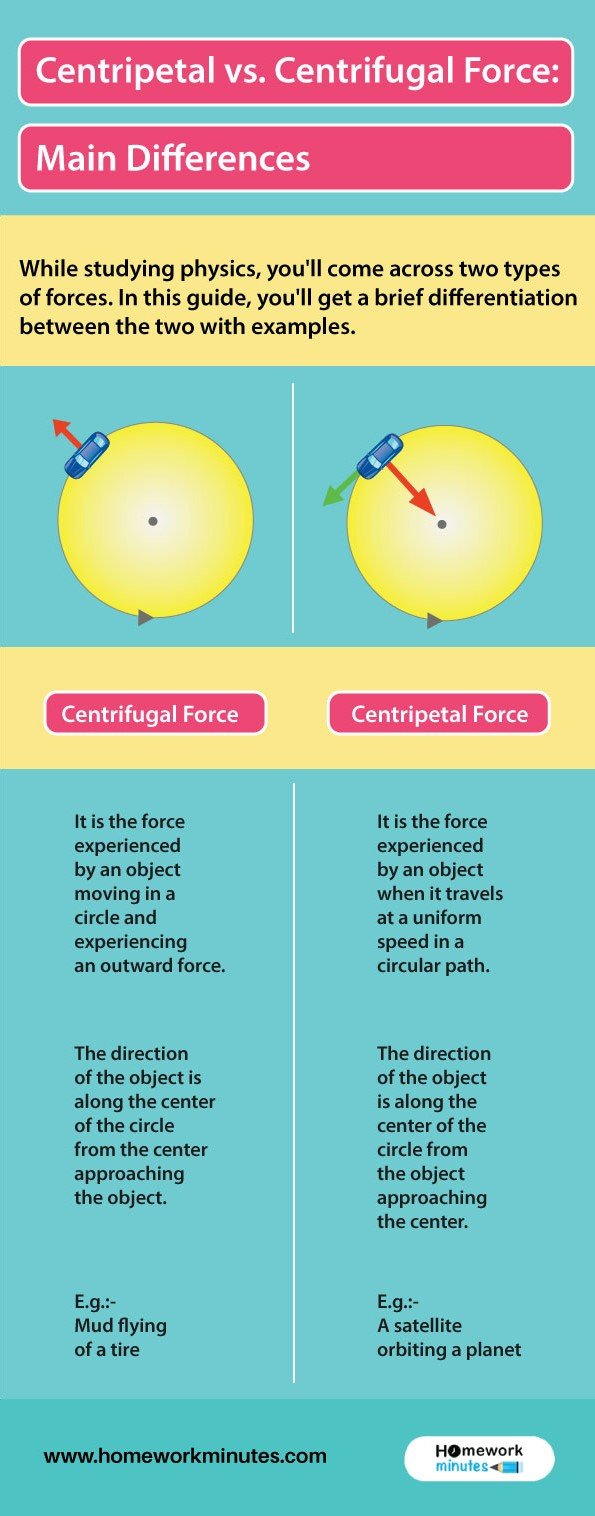As a fact, know that force is required to move an object from one point. Each type of force acts differently on any object depending on the type of motion exhibited by an object. If we look at the curvilinear motion, there are two types of forces existing. In this guide, you’ll get a brief differentiation between the two with examples.
Also read:-
Centrifugal Force
The first type of force is centrifugal force. It is a force that arises from the body’s inertia and appears to act on a body moving in a circular path, directed away from the center around the body. The unit of centrifugal force is Newton. The force drives the object away from the center.
- It is a fictitious force experienced by an object moving in a circle and experiencing an outward force.
- The direction of the object is along the center of the circle from the center approaching the object.
E.g.:- Mud flying of a tire
Calculating the Centripetal Force
Centrifugal force formula is given as the negative product of mass (in kg) and tangential velocity (in meters per second) squared, divided by the radius (in meters). On doubling the tangential velocity, the centripetal force will be quadrupled.
Fc = −mv2 / r
Where,
- Fc is the Centrifugal force
- m is the mass of the object
- v is the velocity or speed of the object
- r is the radius
Centripetal Force Examples in Daily Life
- Weight of an object at the poles and on the equator
- A bike making a turn
- Vehicle driving around a curve
- Equatorial railway
Centripetal Force
The 2nd type of force is the centripetal force. It is the component of force acting on an object in a curvilinear motion, directed towards the axis of rotation or the center of curvature.
- It is the force experienced by an object when it travels at a uniform speed in a circular path.
- The direction of the object is along the center of the circle from the object approaching the center. That is, the centripetal force is always directly proportional to the displacement of the object.
E.g.:- A satellite orbiting a planet
Calculating the Centripetal Force
The Centripetal Force Formula is given as the product of mass (in kg) and tangential velocity (in meters per second) squared, divided by the radius (in meters). Hence, on doubling the tangential velocity, the centripetal force will be quadrupled.
F = mac = mv2 / r
Where,
- F is the Centripetal force
- ac is the Centripetal acceleration
- m is the mass of the object
- v is the speed or velocity of the object
- r is the radius
Centripetal Force Examples in Daily Life
- Spinning a ball on a string or twirling a lasso
- Turning a car
- Going through a loop on a roller coaster
- Planets orbiting around the sun
If you need help with your physics assignment, seek instant online assignment help from our experts. Seek 24*7 help any part of the day. Chat with us now!


